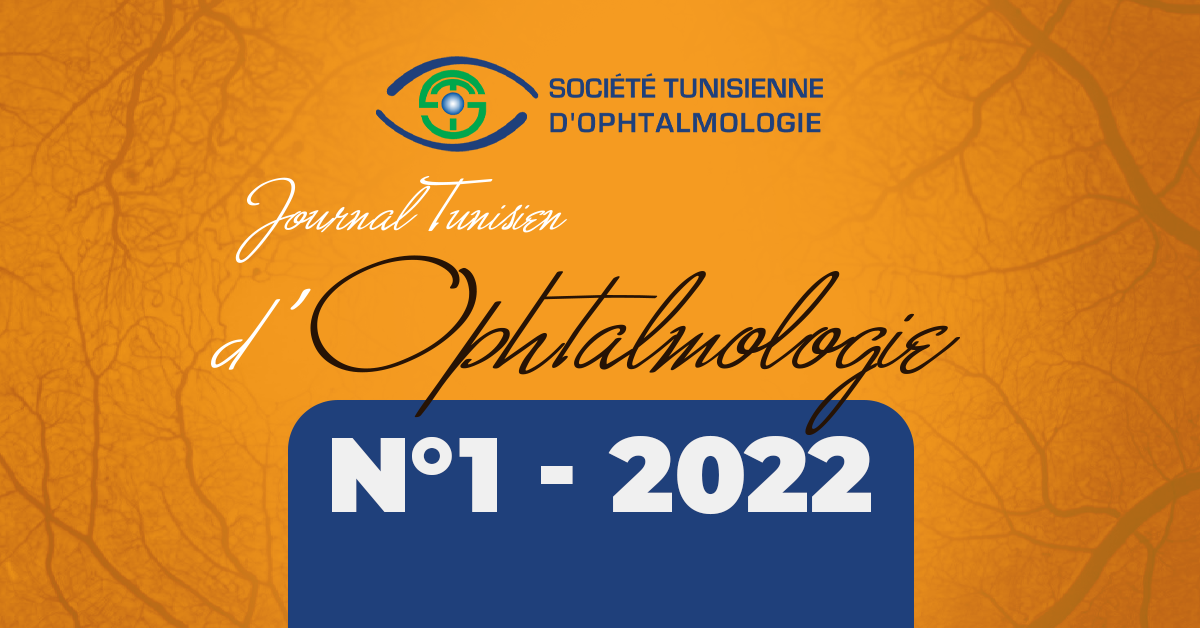
Uncommon bilateral optic neuropathy in Wernicke’s encephalopathy complicating gravidarum hyperemesis
18 octobre 2023
Facteurs pronostiques des kératites infectieuses sous lentilles de contact
18 octobre 2023
Interest of multimodal imaging in the diagnosis and follow-up of the dome-shaped macula
Kmar Maaloul*, Aymen Ben Mrad, Sofien Affes, Dorra Sellami, Amira Trigui
Service d’ophtalmologie, Hôpital universitaire Habib Bourguiba, Faculté de médecine de Sfax, Université de Sfax, Tunisie
Mots-clés
macula bombée, néovascularisation choroïdienne, décollement maculaire séreux
Keywords
dome-shaped macula, choroidal neovas- cularization, serous macular detachment
Résumé
Introduction. La macula bombée est définie par un bombement maculaire au sein de la concavité d’un staphylome myo- pique. Elle a été caractérisée suite aux progrès de la tomographie par cohérence optique.
But Analyser les caractéristiques de la macula bombée, les complications associées et l’évolution clinique chez trois patients myopes.
Observations.
Premier cas : Une Femme âgée de 44 ans a consulté pour un flou visuel depuis trois jours. Le fond d’œil a montré une dysversion papillaire, un conus myopique, une atrophie choriorétinienne diffuse et un staphylome inférieur au niveau des deux yeux. L’imagerie multimodale a montré une macula bombée compliquée de décollement maculaire séreux au niveau des deux yeux avec un doute sur un néovaisseau choroïdien associé au niveau de l’œil droit. La patiente a reçu une injection intra-vitréenne de Bévacizumab au niveau de l’œil droit. L’évolution fut marquée par un état station- naire au niveau de l’œil droit et une amélioration spontanée au niveau de l’œil gauche.
Deuxième cas : Une Femme âgée de 48 ans a consulté pour une baisse brutale de l’acuité visuelle au niveau de l’œil droit. Le fond d’œil a montré une atrophie choriorétinienne diffuse au niveau des deux yeux, une lésion jaune-grisâtre maculaire au niveau de l’œil droit et des al- térations de l’épithélium pigmentaire maculaire au niveau de l’œil gauche. L’imagerie multimodale a montré une macula bombée associée à un néovaisseau choroïdien au niveau de l’œil droit et compliquée de décollement maculaire séreux au niveau de l’œil gauche. La patiente a reçu une injection intra-vitréenne de Bévacizumab au niveau de l’œil droit. L’évolution fut marquée par une amélioration fonctionnelle au niveau de l’œil droit avec apparition d’une fibrose sous rétinienne et par une amélioration spontanée au niveau de l’œil gauche.
Troisième cas : Un Homme âgée de 45 ans a consulté pour une cor- rection optique. Le fond d’œil a montré une dysversion papillaire et des altérations de l’épithélium pigmentaire maculaire au niveau des deux yeux. L’imagerie multimodale a montré une macula bombée compliquée de décollement maculaire séreux au niveau de l’œil droit et de dégénérescence rétinienne kystique au niveau de l’œil gauche.
Conclusion. La tomographie par cohérence optique, avec des scans à la fois verticaux et horizontaux, est essentielle pour le diagnostic de la macula bombée. Le décollement maculaire séreux et les néovaisseaux choroïdiens sont des compli- cations fréquemment associées à la macula bombée.
Abstract
Introduction. The dome-shaped macula is defined by a macular bulge within the concavity of a myopic staphyloma. It was characterized following advances in optical coherence tomography.
Aim. To analyze the characteristics of dome-shaped macula, the associated complications and the clinical course in three myopic patients.
Cases description
Case 1: A 44-year-old woman consulted for visual blurring for three days. The fundus showed papillary dysversion, myopic conus, diffuse chorioretinal atrophy and inferior staphyloma in both eyes. Multimodal imaging showed a dome-shaped macula complicated by a serous macular detachment in both eyes with doubt about an asso- ciated choroidal neovascularization in the right eye. The patient received an intravitreal injection of Bevacizumab in the right eye. The evolution was marked by a stationary state in the right eye and a spontaneous improvement in the left eye.
Case 2: A 48-year-old woman consulted for a sudden drop in visual acuity in the right eye. The fundus showed diffuse chorioretinal atrophy in both eyes, a greyish-yellow macular lesion in the right eye and macular pigment epithelial changes in the left eye. Multimodal imaging showed a dome-shaped macula associated with a choroidal new vessel in the right eye and complicated by a serous macular detachment in the left eye. The patient received an intravitreal injection of Bevacizumab in the right eye. The evolution was marked by a functional improvement in the right eye with the appearance of subretinal fibrosis and by a spontaneous improvement in the left eye.
Case 3: A 45-year-old man consulted for an optical correction. The fundus showed papillary dysversion and macular pigment epithelium alterations in both eyes. Multimodal imaging showed a dome-shaped macula complicated by serous macular detachment in the right eye and cystic retinal degeneration in the left eye.
Conclusion. Optical coherence tomography, with both vertical and horizontal scans, is essential for the diagnosis of dome-shaped macula. Serous macular detachment and choroidal neovascularization are common complications associated with dome-shaped macula.
